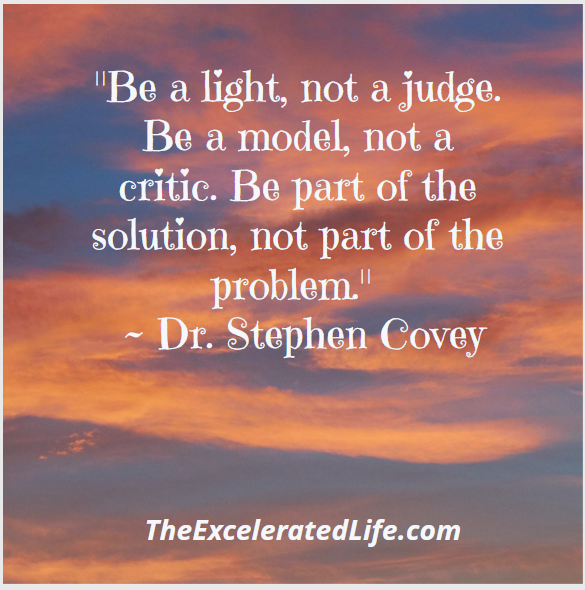Reactive language puts the control outside of you and gives it to someone or something else. Using proactive language puts you in control. You select the consequences you desire, then choose the actions that you believe lead to those consequences.
“Have To” or “Choose To”?
“I have to stay up till I finish this paper,” my daughter said to me. She was in middle school and I had gone in to remind her that it was close to bed time.
“Have to?” I asked. “Or choose to?”
“Oh, I have to finish it,” she replied.
“What happens if you don’t finish it?”
She gave me a look that said, “Can you really be that dumb!?” Out loud, she said, “I’ll get an F on the paper!”
“How would you like that?”
That look again. “I would hate it!”
“And what happens if you stay up late?” I asked her.
She thought a minute. “I’ll be sleepy and tired in the morning.”
“So,” I said. “You have a choice, right? You can get your rest and get a bad grade on your paper, or you can finish the paper and be tired and sleepy in the morning.”
“I guess so.”
“So you don’t really have to do it. You select the consequences you want and then choose the action you believe will result in those consequences. See the difference?”
“I guess so.”
“So which is it?”
She sighed. “I choose to stay up and finish my paper.”
“Well, don’t stay up too long.”
What You Have To Do
What do you have to do? Actually, nothing . . . well, outside of a few bodily functions. Look at your plans, projects, and To Do lists. Most of us have things, sometimes many things, we think we have to do or should do. But have to’s represent the fundamental needs for survival. Only the things that fulfill these most basic needs qualify as have to’s.
With that in mind, look at your list of have to’s and repeat after me, “I don’t have to _____.” (Fill in the blank.)
So, what are all those tasks, plans, and projects you are facing? They are things you choose to do, although you may not realize it yet. You choose the consequences you want and then choose the actions that bring the consequences. It’s like picking up a pencil — you pick up one end, the other end comes with it.
You choose an action because you desire a certain outcome or desire to avoid an outcome. You want to wear clean clothes, so you choose to do the laundry. You want to eat from clean plates, so you choose to do the dishes.
Proactive Or Reactive
Dr. Stephen Covey, author of The 7 Habits Of Highly Effective People, calls this proactive language vs. reactive language. Reactive language places the locus of control outside of ourselves. Someone else calls the shots. But proactive language places us at the center of our locus of control — we call the shots in our own lives.
Listen to the difference in these examples: I have to _____ vs. I choose to _____. She makes me so mad! vs. I control my own feelings. I can’t vs. I choose. I must vs. I prefer.
Look at your list of have to’s again. What are the consequences you want to achieve (or avoid)? Which ones are important to you? Again, repeat after me: “I don’t have to ____________ (fill in the blank) but I choose to do it.” If you choose to do the thing you don’t have to do, that’s OK.
Make The Shift
Listen to yourself today. How many times do you use reactive language? Stop yourself when you hear it and reframe the statement in proactive language. Over time, you’ll feel the shift in power from an external to an internal locus of control. You might also add, “I choose to do it and I can do it.” Because you can. And that is embracing the Excelerated Life™!
Excelerated Self-discipline™ — doing what you say you will do — is one step in creating your Excelerated Life™, a life of flourishing, of well-being, meaning, and purpose.
Read more about the Excelerated Life™.
Resources:
Covey, Stephen R. The Seven Habits Of Highly Effective People. New York: Simon & Schuster, 1989


